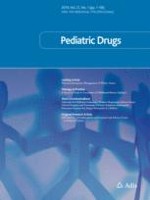01-11-2003 | Therapy In Practice
Neonatal Sepsis
Epidemiology and Management
Published in: Pediatric Drugs | Issue 11/2003
Login to get accessAbstract
Neonatal sepsis is uncommon (2–4 per 1000 live births in developed countries), but the rate increases dramatically in premature newborns and those born to mothers with infections or prolonged rupture of the fetal membranes. While infections caused by organisms contracted from the mother at birth have decreased in the past two decades, there has been an increase in nosocomial infections. Today, most infants with sepsis have been hospitalized in neonatal intensive care units for weeks or months because of extreme prematurity, or because of a congenital malformation or surgical condition. Antimicrobial therapy is usually begun prior to the isolation of a pathogen and is based upon knowledge of the likely microbes in the particular clinical situation.
The number of antimicrobial agents that can be safely used in neonates is relatively small, and dose administration usually needs to be adjusted based upon birthweight and post-gestational age. The decision whether to treat with antimicrobials should be made with consideration of the history, physical examination, and laboratory data. One should also consider the effects of the use of antimicrobials on the flora of the care unit. Bacterial resistance in the resident flora of the unit has become a major problem where there has been indiscriminate use of broad-spectrum agents.





